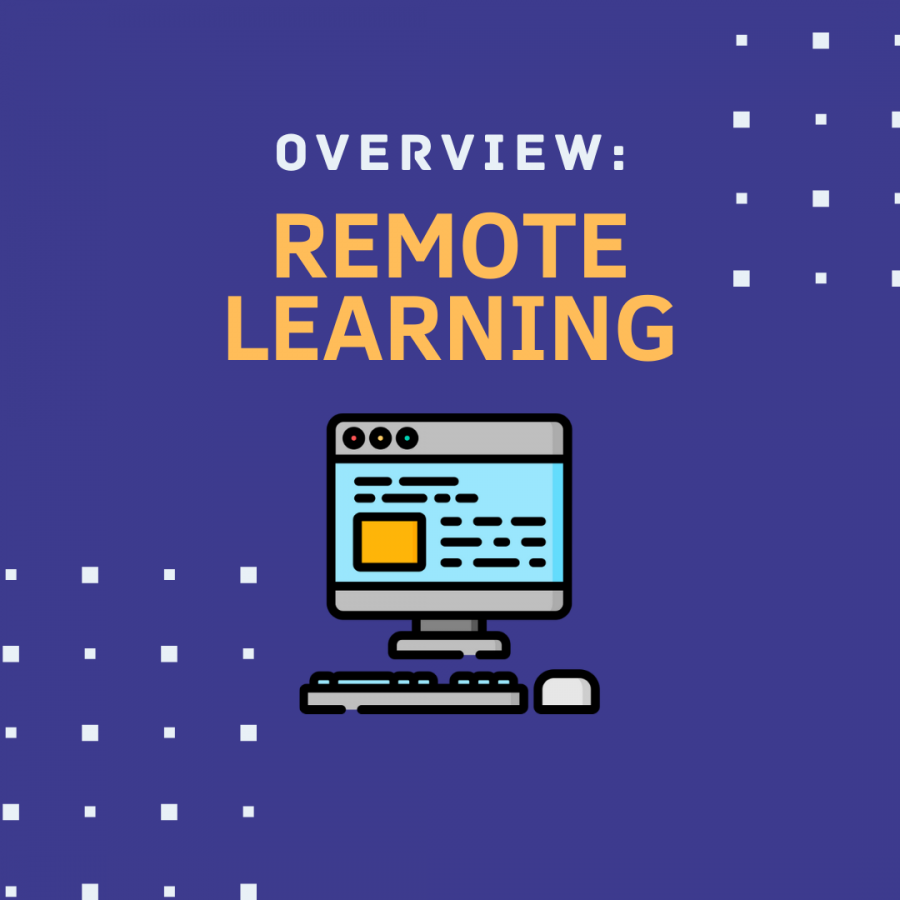The Transition to Remote Learning
October 29, 2020
For the foreseeable future of the 2020-2021 school year, Cupertino High School has wholly switched to remote learning. Teachers and clubs have had to migrate their curriculums online while students have had to adjust the way they learn and their daily routines.
Cupertino High School has been using Zoom to facilitate synchronous online classes. The school has paid for the enterprise version of Zoom. The enterprise version has helped stop the Zoom bombings, which were a problem last year. Teachers are now using polling features to interact with the students in different ways. This feature allows a teacher to release a poll through the zoom call, and students can respond to the poll. Teachers are both able to share the poll responses and see which students have completed the poll. On top of the polling features, more teachers are making use of the breakout rooms. This allows students to collaborate in separate groups. Students are placed in their own “room” where the audio and chat are private. Other breakout groups are not able to see or hear the students in different breakout rooms. This helps stimulate group work environments in typical physical classrooms. Teachers have been using breakout rooms for group quizzes, discussions, group reading, and ice breakers. Teachers have not only made changes to the way they use Zoom, but they have also transitioned from using School Loop.
Instead of using School Loop for this year, teachers are using Schoology. While Schoology has been a significant change for many students because of the lack of exposure to it in the past, the school set aside time at the beginning of the school year for students to learn how to use the app. . While the school has switched to Schoology due to its many capabilities, it still has its flaws. Many students have faced issues with turning in assignments and issues with the user interface. Kathleen Hua, a junior at Cupertino High School, stated, “The assignment dashboard should be improved, after submitting an assignment, it is still shown (on the upcoming assignments page).” This is quite annoying and confusing for students, making it seem that they have not completed the work. Thomas Brewster also did not like the UI, “The user interface is pretty hard to navigate. I prefer the user interface of Schoolloop and google classroom.” While the school’s advisory lessons to help students learn how to use Schoology have been useful, it will still take time for the students to truly grasp the software’s ins and outs.
Students and teachers are not only using Zoom and Schoology for remote learning. Many students and teachers are using different third party resources to make the remote learning experience much smoother. Mrs. Demetriou, one of the AP Calculus BC teachers, has been sharing her iPad screen during class to facilitate online classes. “I am using the GoodNotes app on my iPad. It gives me the feeling of having a whiteboard like in the normal classroom. It works much better than the Zoom whiteboard”, she stated. Some of the other math teachers are also using the combination with an iPad and an Apple Pencil. This resource not only has the benefits of a whiteboard, but it also allows teachers to post the class notes quickly.
How have teachers been changing the curriculum to online? AP teachers like Demetriou have been uploading the notes sheets and homework documents to Schoology. They do not have much say in changing the curriculum for online because the College Board regulates this. Most of the other teachers have been digitizing the usual curriculum for their classes. Teachers have been learning how to use Schoology to be able to make posting assignments and information quick and easy.
Teachers are not the only ones digitizing their curriculum. The Speech and Debate club have moved their practice sessions online. In fact, they have been conducting online practices since the start of emergency remote learning. They have also switched to online tournaments, which are hosted through Zoom. While they have done a great job of adapting to the remote learning circumstances, they faced some problems because of the situation’s uncertainty. Aniruddh Suresh, president of Speech and Debate, stated, “Around when school ended, we did not know when this (remote learning) was going to end. We had to gear up for both possibilities, that of school staying online and returning to in-person.” While summer practices have stopped, the season practices will continue in the next few weeks. Another problem they have faced is recruiting; while ASB has been keeping the club updated on how it will play out, they still have no definite answer to how they will be recruiting new members.
Since emergency remote learning occurred earlier in the year, both students, teachers, and clubs have been adapting to the new reality. The school switched to new apps to help better the experience of learning for the students. Teachers have digitized the curriculum and have come up with new ways to teach the class remotely. Students have learned how to use new applications and adjusted the way they learn. Clubs have come up with plans on how to operate for the rest of the school year.




